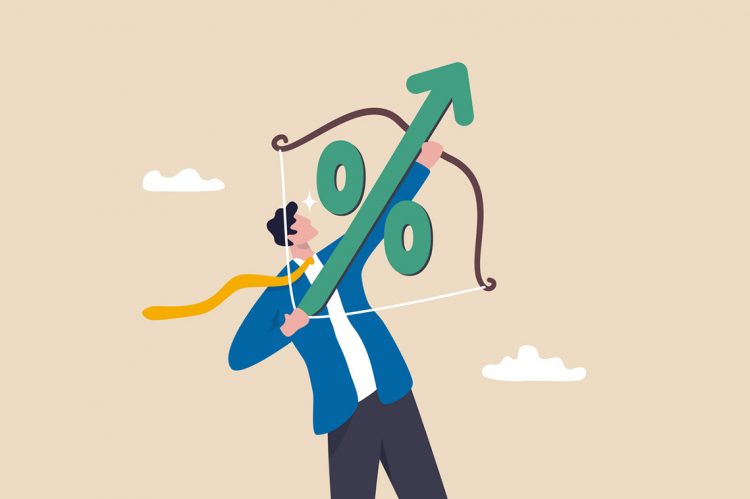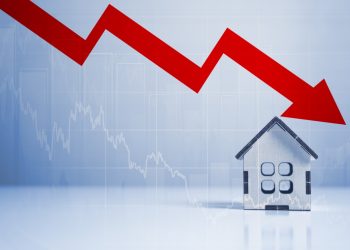Mortgage rates increased for the sixth-straight week this week, reaching another high we haven’t seen in more than a decade.
According to Freddie Mac’s Primary Mortgage Market Survey® (PMMS®), the 30-year fixed-rate mortgage (FRM) rate averaged 6.70% this week, up from last week’s increase to 6.29%
Here’s this week’s breakdown:
- 30-year fixed-rate mortgage averaged 6.70% with an average 0.9 point as of September 29, 2022, up from last week when it averaged 6.29%. A year ago at this time, the 30-year FRM averaged 3.01%.
- 15-year fixed-rate mortgage averaged 5.96% with an average 1.3 point, up from last week when it averaged 5.44%. A year ago at this time, the 15-year FRM averaged 2.28%.
- 5-year Treasury-indexed hybrid adjustable-rate mortgage (ARM) averaged 5.30% with an average 0.4 point, up from last week when it averaged 4.97%. A year ago at this time, the 5-year ARM averaged 2.48%.
What the experts are saying:
“The uncertainty and volatility in financial markets is heavily impacting mortgage rates,” said Sam Khater, Freddie Mac’s chief economist. “Our survey indicates that the range of weekly rate quotes for the 30-year fixed-rate mortgage has more than doubled over the last year. This means that for the typical mortgage amount, a borrower who locked-in at the higher end of the range would pay several hundred dollars more than a borrower who locked-in at the lower end of the range.”
Khater continued, “The large dispersion in rates means it has become even more important for homebuyers to shop around with different lenders.”
Realtor.com’s Manager of Economic Research, George Ratiu, commented:
“The Freddie Mac fixed rate for a 30-year loan compounded last week’s momentum with another jump toward 7%, in a week which saw the 10-year Treasury touch 4%, a level not seen since 2008. Investors are concerned about the likelihood of an economic recession due to the Federal Reserve’s push to crush inflation through monetary tightening. Meanwhile, incoming data continue to underline a steady economy, resilient job market and rebounding consumer confidence. The volatility seen in financial markets is an indicator of the uncertainty caused by the juxtaposition between resilient economic activity and expectations of decline in 2023. The main concern is Americans’ ability to weather 40-year high inflation which is shrinking paychecks amid sharp rent increases and still-rising home prices, not to mention high interest rates which are curbing households’ ability to borrow. With higher rates for credit cards, car loans, and mortgages, consumers’ ability to spend has been significantly diminished, raising the prospect of lower spending, especially in the upcoming holiday retail season.
“The last time mortgage rates were in 7% territory was two decades ago, in early 2002. At the time, the median price of an existing home was $150,900 and that of a new home was $182,700. With a 20% down payment and a 7% interest rate, the buyer of a median-priced home in 2002 would have a monthly payment of $803, before property taxes, insurance and HOA fees. With the median household income in 2002 at $42,409, and assuming a 25% marginal tax rate, a household dedicated about 30% of its monthly income to a mortgage. Today’s typical household is looking at homes with a median price of $435,000, which translates into a monthly mortgage payment of $2,300. Given that the median annual income is about $71,000 and assuming a federal tax rate of 22%, today’s household is spending 44% of its income on a mortgage, before factoring in property taxes, insurance and other expenses.
“The huge surge in mortgage rates over the last nine months has squashed many buyers’ budgets, leading to a significant pullback in transactions. The 7-month decline in existing home sales is not surprising considering the increasing affordability crisis. A household earning the median annual income of $71,000 and using a 20% down payment could afford a home priced at $448,700 in January 2022 when rates were 3.1%. In contrast, at a 7% mortgage rate, the same household can only buy a $341,700 home – meaning that consumers have lost $107,000 in buying power this year.
“With monetary policy continuing to tighten, mortgage rates are expected to continue climbing. While even two months ago rates above 7% may have seemed unthinkable, at the current pace, we can expect rates to surpass that level in the next three months,” Ratiu concluded.
Nadia Evangelou, NAR senior economist and director of forecasting, commented:
“Mortgage rates rose by more than one percentage point in September. According to Freddie Mac, the 30-year fixed mortgage rate increased to 6.7% from 5.66% in the first week of September. As a result, home buying is 12% more expensive now than a month ago.
“In other words, current buyers need to spend about $250 more every month to buy a median-priced home compared to buyers who purchased their home a month ago. Due to fast-rising mortgage rates, the housing market has slowed down. However, as we head into the last quarter of the year, activity may decline even further. Every year, transactions and prices tend to be above-trend in the summer, while activity typically slows down in the fall and winter.
“The impact of seasonality is vital to the housing market since it affects housing demand and supply. Specifically, the fourth quarter is typically one of the slowest quarters for home sales, representing 24% of the total activity throughout the year. Compared to the third quarter, activity typically drops by 15 percentage points in the last quarter of the year. Nevertheless, this drop will be no surprise, with mortgage rates near 7% and an even larger reduction in home sales,” Evangelou said.












